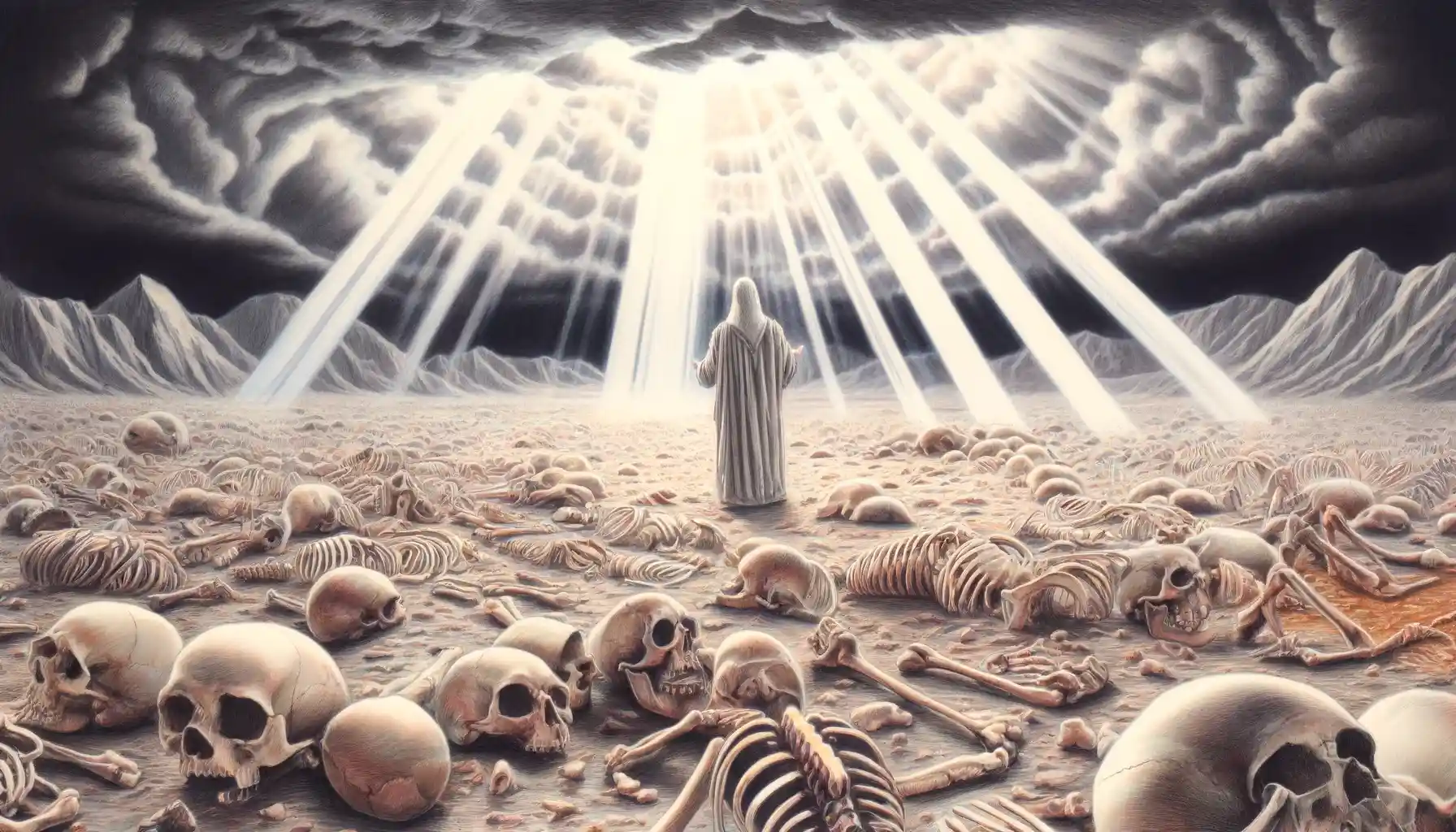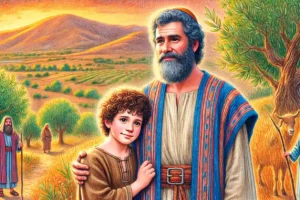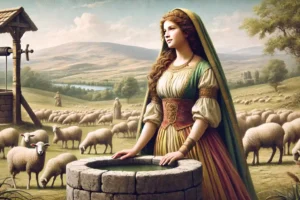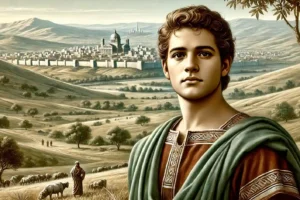
Ezekiel: Prophet Known for his Visions
Ezekiel, a prophet in the Hebrew Bible, is renowned for his vivid and symbolic visions, including the famous vision of the valley of dry bones, which conveyed messages of hope and restoration to the exiled Israelites.
Quick Facts
- Priestly Background: Ezekiel was a priest taken into Babylonian exile around 597 B.C.
- Call to Prophecy: He received his prophetic calling in Babylon, where he lived among the exiled community.
- Symbolic Actions: Ezekiel often used dramatic and symbolic actions to convey his prophecies.
- Vision of God’s Glory: His inaugural vision included seeing the glory of God in a chariot-throne supported by four living creatures.
- Valley of Dry Bones: Ezekiel’s vision of the valley of dry bones symbolized the restoration of Israel, bringing the dead back to life.
- New Temple Vision: He also had a detailed vision of a new temple, symbolizing the future restoration of worship.
- Book of Ezekiel: His prophecies are recorded in the Book of Ezekiel, one of the major prophetic books in the Hebrew Bible.
Historical and Cultural Context
Ezekiel was born into a priestly family around 622 B.C. and was among the Jewish exiles taken to Babylon in 597 B.C. during the reign of King Jehoiachin of Judah. This period was marked by significant upheaval as the Babylonian Empire, under King Nebuchadnezzar, conquered Jerusalem, leading to the destruction of the Temple and the forced exile of many Israelites. Ezekiel lived in a settlement called Tel Abib near the Kebar River in Babylon.
Call to Prophecy
Ezekiel’s prophetic ministry began in 593 B.C., five years after his exile, when he was around 30 years old. His calling is vividly described in Ezekiel 1-3, where he had a profound vision of God’s glory. This vision included a stormy wind, a great cloud with flashing fire, and four living creatures with faces of a man, a lion, an ox, and an eagle, symbolizing various aspects of God’s creation. Above them was a throne with the appearance of a human figure, radiating brightness and glory. This vision established Ezekiel’s authority as a prophet and set the tone for his ministry.
Symbolic Actions
Ezekiel often used symbolic actions to convey his messages, which made his prophecies memorable and impactful. For example:
- Siege of Jerusalem: Ezekiel lay on his side for 390 days to symbolize the siege of Jerusalem (Ezekiel 4:4-8).
- Eating Bread: He baked bread over cow dung to illustrate the scarcity and defilement that would accompany the siege (Ezekiel 4:9-17).
- Shaving His Head: He shaved his head and beard, dividing the hair to represent the fate of the people of Jerusalem (Ezekiel 5:1-4).
Vision of God’s Glory Departing
One of Ezekiel’s early visions was of the glory of God departing from the Temple in Jerusalem (Ezekiel 10). This vision symbolized the coming destruction of the Temple and the departure of God’s presence due to the people’s idolatry and unfaithfulness. It served as a divine indictment against the leaders and people of Judah.
Valley of Dry Bones
Perhaps the most famous of Ezekiel’s visions is the valley of dry bones (Ezekiel 37:1-14). In this vision, Ezekiel is taken to a valley filled with dry bones and is commanded to prophesy to them. As he does, the bones come together, and flesh and skin cover them, but they remain lifeless until God commands Ezekiel to prophesy to the breath. The breath enters the bodies, and they stand up as a vast army. This vision symbolized the restoration of Israel, promising that God would revive the exiled nation and bring them back to their land, instilling new life and spirit in them.
Vision of the New Temple
In the latter chapters of his book (Ezekiel 40-48), Ezekiel describes a detailed vision of a new temple, which has both symbolic and eschatological significance. This vision includes precise measurements and descriptions of the temple’s structure, its ordinances, and the land distribution among the tribes of Israel. This vision served to inspire hope among the exiles, pointing to a future time of restoration, worship, and God’s abiding presence among His people.
Theological Themes
Ezekiel’s prophecies are rich with theological insights:
- Sovereignty of God: Ezekiel emphasizes God’s supreme authority over all nations and His control over history.
- Judgment and Restoration: The prophet balances messages of impending judgment due to Israel’s unfaithfulness with promises of future restoration and renewal.
- Divine Presence: The departure and eventual return of God’s glory highlight the importance of God’s presence with His people.
- New Covenant: Ezekiel foreshadows the New Covenant, promising a time when God would give His people a new heart and spirit (Ezekiel 36:26-27).
Legacy and Impact
Ezekiel’s prophecies had a profound impact on both his contemporaries and future generations. His vivid visions and symbolic acts conveyed deep spiritual truths and offered hope during a period of despair and dislocation. The Book of Ezekiel remains a crucial part of the Hebrew Bible and Christian Old Testament, providing insights into God’s character, His expectations for His people, and His plans for restoration and redemption.
Conclusion
Ezekiel, known for his dramatic and symbolic visions, played a crucial role in guiding the exiled Israelites through a period of crisis. His prophecies emphasized God’s sovereignty, the need for repentance, and the promise of future restoration. Ezekiel’s life and ministry continue to inspire and instruct believers about faithfulness, hope, and the transformative power of God’s presence.



